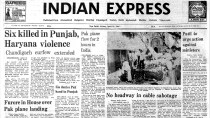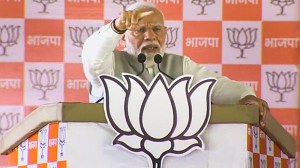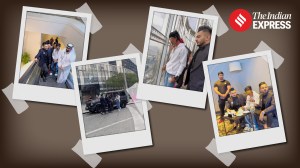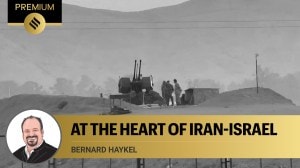- India
- International
The unnoticed agreement
Prime Minister Modi’s Iran trip also yielded a significant cultural pact
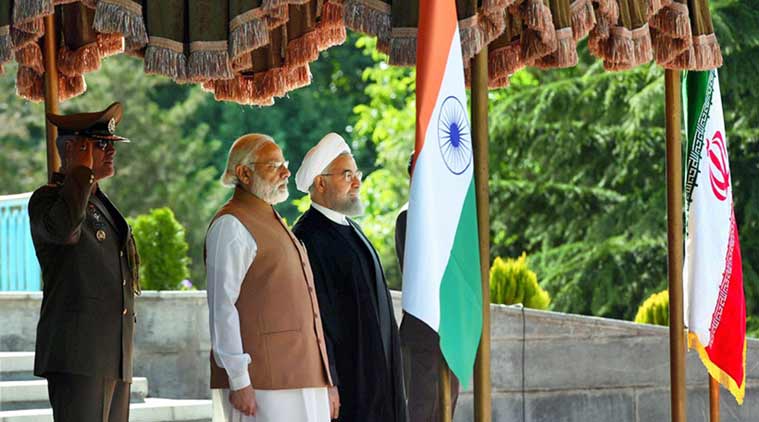 Prime Minister Narender Modi with Iranian President Hassan Rouhani, during an official arrival ceremony at the Saadabad Palace in Tehran, Iran, Monday. (PTI Photo)
Prime Minister Narender Modi with Iranian President Hassan Rouhani, during an official arrival ceremony at the Saadabad Palace in Tehran, Iran, Monday. (PTI Photo)
Prime Minister Narendra Modi’s visit to Iran raised interest not just in India but across the world. Before the ink was dry after signing agreements on the Chabahar port and the trilateral agreement between India, Iran and Afghanistan, and Modi praising the JCPOA as a “triumph of diplomacy and sagacity”, China jumped in to share the headlines, declaring its long-standing friendship and ties with Iran. Not to be outdone, Pakistan too made appropriate noises on its plans to work with Iran. The attempt at sharing attention on the front page of the Tehran Times of May 25 made some insiders smile. It was a sure indication of the success of the visit of India’s premier and his roadmap to energise strategic ties, renew economic ties, and revitalise age-old cultural links with the great Persian civilisation.
The cultural agenda was covered under the largely unnoticed third agreement signed under the PM’s aegis by the Indian Council for Cultural Relations and the Islamic Culture and Relations Organisation. Here is the text of the cultural section of India’s third agreement with Iran: xii. Driven by mutual desire to promote Indology and Persian Studies so that the current and future of citizens of the two countries are better informed of the mutually enriching and close interaction among India and Iran, both sides welcomed a number of initiatives underway and planned in the cultural sphere. They appreciated the organisation of the event ‘India and Iran, Two Great Civilisations: Retrospect and Prospect’ in Tehran from 23-25 May 2016 jointly by the Indian Council for Cultural Relations (ICCR) and the Academy of Persian Language and Literature (Farangistan). Noting the importance of the MoU signed between the ICCR and the Islamic Culture and Relations Organisation (ICRO), they encouraged scholars, authors, media, film community, artistes, youth and sportspersons to participate in each other’s cultural and other such festivals planned for the coming two years. They hoped that other measures such as renewed Cultural Exchange Programme, creating an Eminent Persons Group for exploring further avenues of cooperation, and establishing a Chair for Hindi language in Tehran University and also supporting the Persian language courses in India, will further boost the efforts to cherish and preserve the shared cultural heritage of the two countries.
In the past decade, India has been attaching growing importance to the use of its vast resource of “soft power”. This happens for both capacity building in African countries and people-to-people contacts with countries like China and Japan. These should not go unnoticed. Soft cultural diplomacy resonates positively among the common people of different countries through Bollywood music and films, classical and folk music, linguistic similarities, arts and craft, food, and even dress. Across countries, from Iran, Russia, China, Egypt and Ethiopia to Brazil, some music group or individual will start singing a familiar Hindi film song when they spot Indians, admire Indian handwoven silk saris, roll their eyes at a chicken tikka and stop you in a crowded bazaar to ask about Aishwarya Rai or Katrina Kaif.
The PM’s inauguration of a two-day international conference on India-Iran, Two great civilisations: Retrospect and Prospect, included the release of the famous Persian manuscript Khalileh was Dimneh, which is a translation of India’s Panchatantra Tales. It has been a celebrated document in Iran’s history while modern Indian parents only half-heartedly offer it to their children. In his speech, Narendra Modi made two evocative points. He reminded the audience of a popular saying that the nightingales of Iran sing more beautifully because of the sweets that come from India, and that we need to revive the great times when Persian calligraphers wrote the scripts illustrated by Indian artists.
As the only non-scholar, cultural/craft activist in the conference, among a cultural delegation of Iranologists, poets and musicians from India coinciding with the the PM’s visit, my offering was a visual landscape of how Iranian artists and crafts persons have influenced India’s art and architecture over the centuries, not just in Kashmir, but in Rajasthan, Gujarat, Andhra Pradesh and Telangana among others. These influences have been internalised so deeply in the Indian artist’s psyche that origins are forgotten but motifs, colours, techniques and themes remain.

In the cities of Isfahan and Shiraz, Indian artists and designers would be overwhelmed at the splendour of the tiles, mosaics, paintings and brickwork on edifices constructed at different times in history. From the origins of the Zoroastrians at Persepolis, where stone relief work shows Indian delegations in procession with gifts for Darius, to paintings of Humayun’s court, textiles that resonate with Indian colours and paisleys, tile designs on mosques with images of elephants, not only is the artistry magnificent but the preservation of cultural heritage is remarkable for its eclectic and secular outlook and sophistication. Our ASI and even Swachh Bharat agencies have a lot to learn.
After years of strong Western cultural influences, the vibrant culture of the “common bazaar”, the bustling space that generally forms the beating heart of craft, culture and commerce, from the Middle East to India to South Asia and the far East, is a cultural, economic and social construct that brings people together and is worth preserving. One only needs to reconnect these common cultural traditions through opportunities for collaborations for these old exchanges to flourish again.
EXPRESS OPINION
More Explained
Apr 20: Latest News
- 01
- 02
- 03
- 04
- 05











